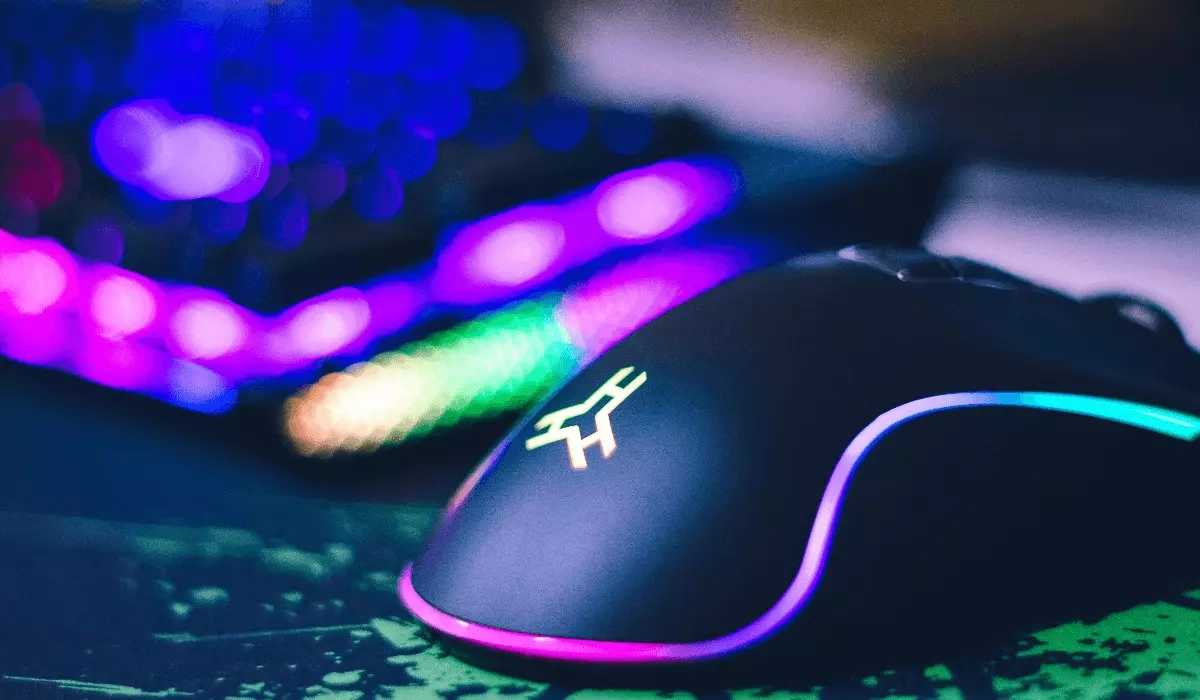My name is Matthew and I work at Crazy Labs as a programmer and game designer. I've been working in gamedev in various positions for seven years, and in this article I'll talk about who is behind game development. But let's start at the beginning, which is a definition that will define what games actually are.
What are games?
People have different ideas about what games look like and whether there are games at all. I'm sure that if I asked someone for a two-sentence definition, each would sound completely different.
What does Wikipedia, the source of all definitions, have to say? According to it, computer games are "a type of computer software designed for entertainment or educational purposes (interactive entertainment) and requiring the user (player) to solve logical and arcade tasks." But is a game that doesn't include logic or dexterity tasks no longer a game?
A YouTube video, The Art of Screenshake, by Jan Willem Nijman of indie game development company Vlambeer, can be found. It features a graphic that vividly explains what games are:
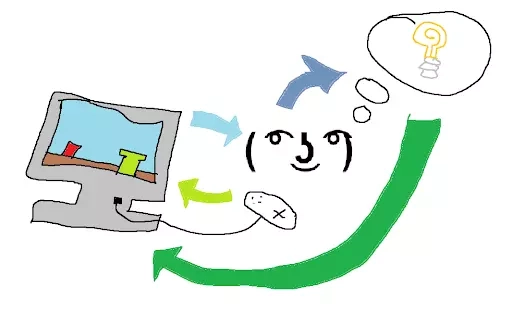
Most of the definitions we see on the Internet boil down to the part on the left of the graphic - the screen, the controller and the two arrows - light green and light blue. It illustrates a situation where the user inputs data into a computer game, and it gives us something back on the screen.
However, there is a second part. The moment we see what is happening on the screen, we have to interpret it - this has been marked on the graphic with a dark blue arrow. Only what we interpret can be mapped onto the screen by our actions.
Without our thoughts on what we see, there will be only 1920 × 1080 pixels left, which means nothing. As we all know, people are different and everyone interprets a game in their own way, which makes it difficult to pigeonhole it unequivocally. For some it will be difficult, for others it will be easy, for some it will be scary, for others it will be peaceful.
Robin Hunicke and Marc LeBlanc wrote an article on how games are interpreted and created. They identified three pillars of the process - mechanics, dynamics and aesthetics.
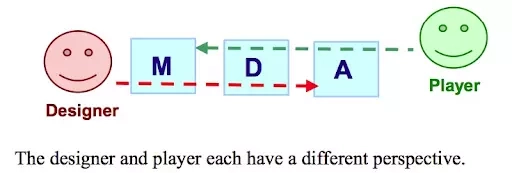
A designer, when developing a game, first creates mechanics. Several mechanics combined together will create dynamics, and these pair of dynamics will create aesthetics, i.e. the way the game will be perceived. What is important in this reasoning is that the user perceives the game quite the opposite. He first sees its aesthetic elements. Once he plays an hour, he begins to understand how specific dynamics work. And if he delves even deeper (this is what game designers usually do when they test games) he breaks down these dynamics into specific mechanics. This allows him to answer questions about why something is done a certain way - such as why Mario jumps six bars up or runs only to the right. In this way, you can break a game down into its first elements and figure out what it's made of.
Who makes the games?
Now we will focus on who is involved in the creation of games. We will start with the people who are responsible for the invention, operation and appearance of the game. I'll talk about the role programmers, artists and designers play in the process. We will start with programmers, among whom we can distinguish the following roles:
Programmers:
-
Gameplay programmer - the person who is responsible for creating the gameplay elements, that is, for making the game simply playable. Gameplay programmer very often works closely with the game designer, as it depends on them how the game will be received.
-
Engine/tool program mer - engines are most often used to create games. These are collections of tools that make the game faster, more efficient. Many gamedev studios create their own engines, but commercial ones are becoming better and more cost-effective. Engines can often be extended with additional functionality - because every game is different, poses different problems and sometimes new tools are needed to solve them. And this is precisely the role of the engine programmer. His task is to make the life of team members simpler, so that they can achieve the goal as quickly as possible, that is, for example, to create a nice board or quest (task).
-
AI programmer - a person who is responsible for artificial intelligence, that is, for how the characters directed by the computer will behave towards the player. And it is not only about the so-called bots that shoot at us, but also about our companions. These types of programmers work, using behavioral trees most often. They have to work with game designers to make the gameplay as enjoyable as possible. After all, we don't want our opponents to know everything and always beat us.
-
Network programmer and back-end programmer - people responsible for the part of the game that is not visible at first glance. They are the least appreciated for their work. If you play a multiplayer game and the system quickly finds you new players, players of similar level, saves your progress on the server or allows you to play with a friend who has an Xbox ( although you play on a PlayStation) - that is their contribution. They do hard work, very necessary and unfortunately underestimated.
After programmers, another very important group of people who create games are artists, among them we can distinguish the following positions:
Artists:
-
Concept artist - a person who is responsible for the first stage of game development: level concepts, characters, possibly moodboards. In concepts it is important to answer a question as quickly as possible. We create the concept faster than the finished model, so we are able to notice some mistakes or interesting things right away - this makes our product better. We are unlikely to see the work of this artist in the final version of the game (unless we buy the premium edition - with artbook).
-
3D artist - a person who creates 3D models. Most often he uses external tools in his work. Many times 3D artists are divided into character artists and environment artists. There are a lot of people who create great characters and a lot of people who don't like to create living things, but are great with environments.
-
2D artist - most often referred to as an illustrator. He deals with the user interface. We can distinguish several types of interface, for example, the so-called interface glued to the screen; the interface that occurs in the three-dimensional game world. An illustrator also creates all kinds of promoart, icons in mobile games, screenshots - things that are very necessary and very often used for games.
-
Technical/VFX artist - Technical artist mainly deals with developing tools for graphic designers, but also with so-called rigging, i.e. putting a skeleton in three-dimensional characters. Here is Geralt's skeleton from The Witcher 3 game:
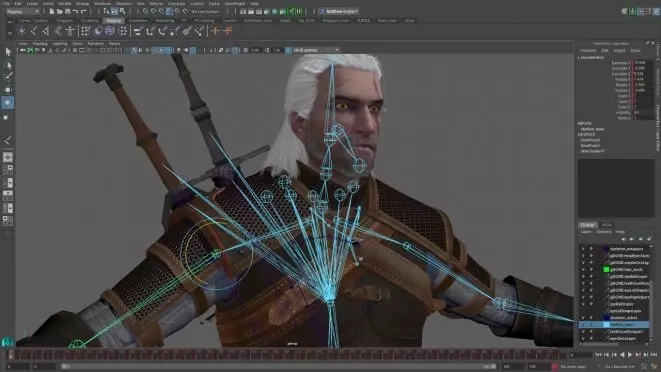
Such a skeleton is later used by animators to create specific animations. VFX artist creates particle effects. If there's a bonfire somewhere in the game, it wasn't done by a 3D graphics artist (unless you're talking about the trunks underneath it), but just a VFX artist, who is responsible for making the end result look like the real thing.
-
Animator - a person who uses a character skeleton made by a technical artist to move the character. How it works. In graphics, everything is made up of triangles. A three-dimensional model does, too. If you move a bone, the triangles move. This allows you to bend a given object. For humanoid, human characters, the increasingly cheap motion capture technology is used. Animation applies not only to the characters themselves, but also to elements of the environment or even the interface. An animator is responsible for this as well.
-
Level artist - this is one of the graphic designers, whose work can also be overlooked. We often perceive the game as a whole, we say, for example: "Oh, this game has very cool models". Let's remember that someone has to lay these models out on the board in some way so that the level presents itself properly. Level designer - whose work is discussed further on - prepares a mockup consisting of the blocks themselves. The level artist's job is to rearrange them into what you see in the graphic below, in order to convey the atmosphere of the scene and evoke certain emotions in the player.
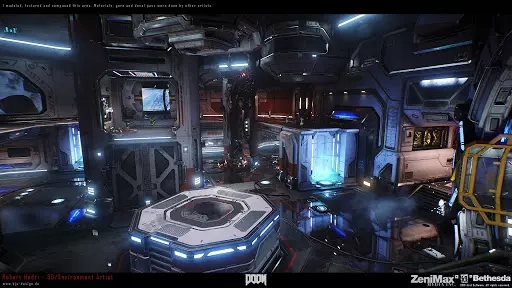
A great example is the new Doom - you will never get lost in this game. Any place that requires your attention is subtly highlighted in green. Thanks to this you can immediately see which way the character should move, the game guides you by itself. This is to the credit of the level artist.
The last group to be discussed will be designers, below I will discuss the specific types of their positions.
Designers
- Idea guy - among game developers it is common to talk about someone like idea guy, or colloquially "idea guy". If you look on any game developer groups, you will find people who write: "Hey, I have a cool idea for a million-dollar game. I'm looking for a programmer and a graphic designer, we split 50/50. I'll give you the idea, and you make the game." That's what an idea guy is. Such a person, however, is not a designer. Why? In a team that makes games, everyone has ideas, better or worse. There is no such thing as million-dollar ideas. The table below, originally presented in the book Anything You Want by Derek Sivers (recommended!), shows that ideas are just a multiplier of the value of implementation. Depending on how we implement an idea, we will get some product value. An excellent idea with poor execution will reach a value of $20,000, while an average idea that is executed brilliantly will be worth $5 million. An idea alone will not save anything, which is why ideas are just cheap.
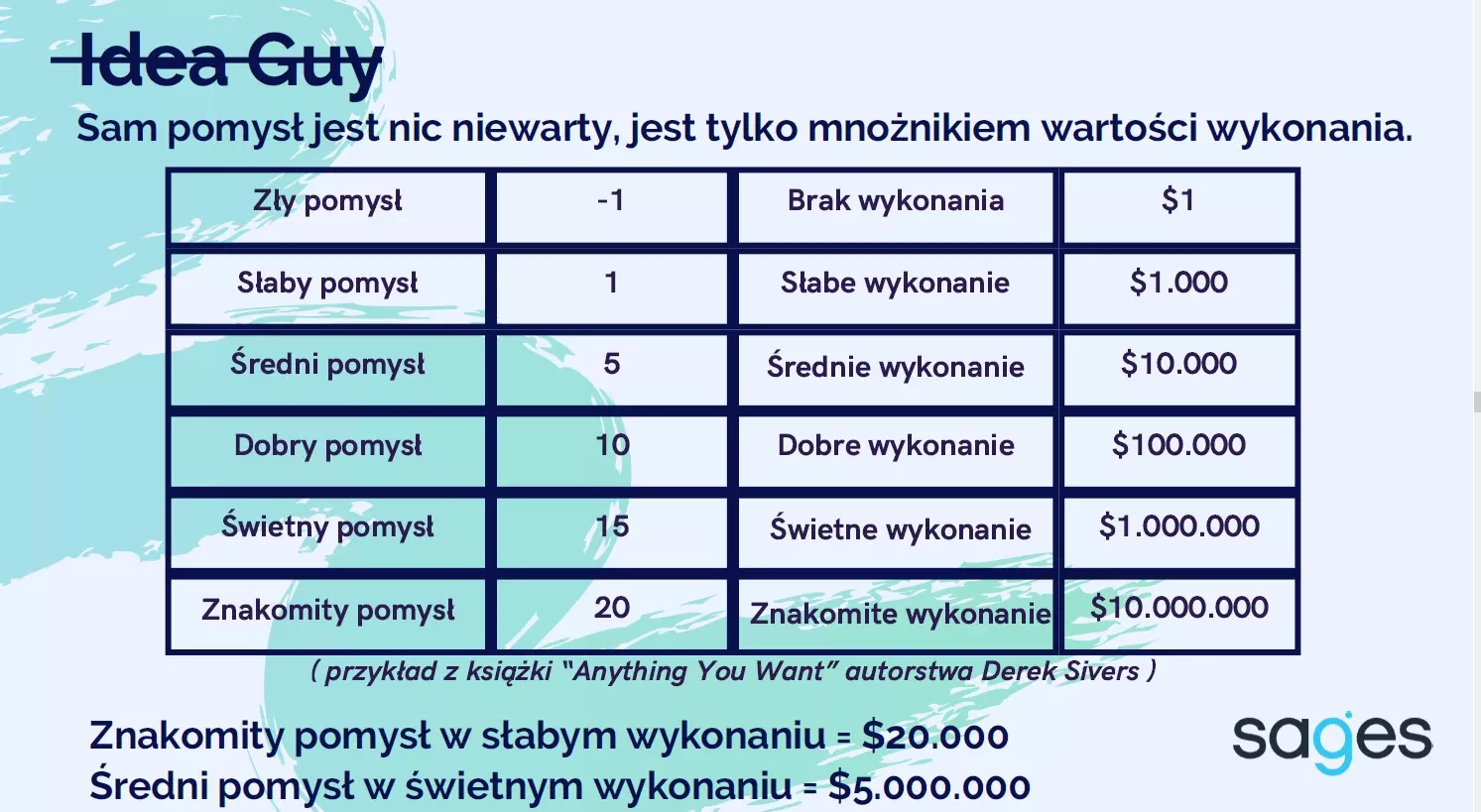
-
Gameplay designer and system designer - these people are responsible for the most crucial experience, i.e. making it simply enjoyable to play. For example, in a Mario game there are several systems: a system for hiding in pipes, a system for jumping on enemies, and so on. How they come together is created by the gameplay designer. In turn, the system designer works with the rest of the team to recreate the vision of the game as closely as possible. It is not always possible to achieve everything, and at some point you have to make difficult decisions and give up some elements of the game. A very good example of such a compromise is one of the FPS games, whose designer came up with the great idea of placing rats on the floor of the room. The moment the player jumps in and starts firing his gun, the rats were supposed to scatter in all directions, start hiding under the furniture and jump into the holes. The developers grabbed their heads when they heard this. The designer didn't realize how much work must be put into such a system. The more experienced the game designer, the more he will be aware that not all his ideas can be used. As I wrote before, ideas are cheap, the most important thing is the implementation.
-
Level designer - a person who creates levels in the game. Here is a fragment of the so-called blockout, which is a simple level arranged from very simple shapes (primitives). They represent the mechanical elements to be found in this level.
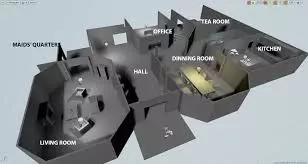
Also important in the work of a level designer are the ideas that allow the systems created by the gameplay designer to shine. Very often levels are constructed in such a way that if we unlock some new mechanics in the game, we can jump in the air, do the so-called double jump. It is good for the level designer to create a level where the user can use this ability. This way he will master it. The level designer must also remember to return to it. So, his job is to combine systems and force the player to use them to complete each level.
-
Content designer and quest designer - people who are responsible for making sure the player has something to do. We don't want the world we built to be just a shell of the main experience. In a very simple way, we can add a little flavor to it, make the game stay in the user's memory for longer. The task of quest designers is to create very cool short stories that will make the game world feel like it lives along with us, and not just exist as an arbitrary part. The Witcher 3 game has very interesting quests, they are really well thought out.
-
Writer - the quests we create should have a story that does not boil down to a command: "Kill 10 slaughterers, because slaughterers are uncool, and we are cool." If we want the game to stay in the user's memory, we should take care of the person who will create the story. It's not just about the overall idea for the game - because the game director also has some vision - but just about embellishing the individual quests.
-
UI/UX designer - UI stands for user interface, and UX stands for user experience (how the player feels at a given moment). The job of these two designers comes down to making sure the game is intuitive. That way, for example, if I want to change an inventory or compare two weapons, I don't have to figure out how to do it. Someone who has never played a game before should immediately catch on to what's going on. He can't feel overwhelmed by the interface. A very cool mental exercise for UI or UX designers is to count how many actions it takes to perform a particular action. Let's say I'm playing The Witcher and I want to replace mutagens. How many times do I have to click the screen to do it? If it turns out to be 10-15, it means that something needs to be improved. This intuitiveness is especially important in the 21st century, because more and more people are playing computer games. Today, everyone who has a smartphone is a gamer.
These are all people who are in charge of how the game will look like. It must be admitted that this is quite a large group of people. As you can see, the creation of games is not as simple as it may seem. Of course, there are a number of other factors that affect the ability of a game to exist in the minds of the public. I will describe these in the next article.
If you also want to get into game development take a peek at our offer of training courses on the subject, which will give you the skills to start your adventure with gamedev.
